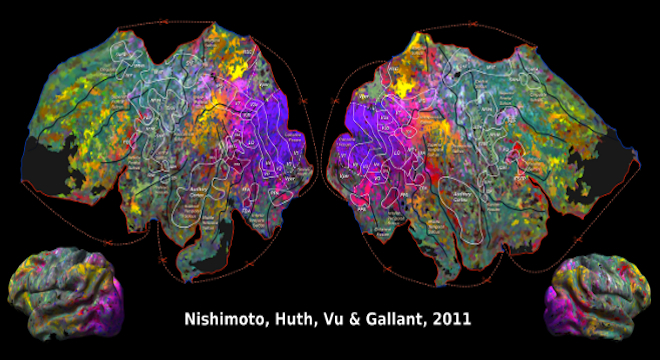Brain researchers at the University of California, Berkeley have already decoded brain activity into watchable movies using a collection of YouTube clips. But now they want to go one step further and decode the activity of the entire visual system, allowing us to see with unprecedented clarity what people see inside their heads, according to the neuroscientist who headed the mind movie project, Dr. Jack Gallant.
“The human brain consists of several hundred distinct modules, each of which has a different function,” Gallant wrote to TPM Idea Lab via email.
“The visual system occupies about 1/3 of the human brain, which suggests that there are somewhere around 75 distinct visual processing modules. The work presented in the Current Biology paper is based entirely on a model that only describes processing in a few early visual areas. Thus, there are many modules for which no processing model currently exists, and these are the focus of our future research.”
Gallant explained that the research going on at his lab focuses on how the human brain translates everything it sees into information that can be archived and accessed later as memories. The translations, measured as blood oxygen level signals in the brain using an fRMI scan, are how the brain interprets the visual world.
“Discovering these representations is the core job of our laboratory,” Gallant told TPM.
Other tools that measure brain activity – including EEG, which measures the brain’s electrical activity, MEG, the brain’s magnetic fields and and NIRS, an infrared brain scan – are inferior to fRMI for this purpose because they “don’t have sufficient spatial resolution,” according to Gallant. This represents a limitation, as MRI machines aren’t currently portable, so all brain scans must be done on site, in a lab, over many hours worth of study.
Also, Gallant cautioned that the exciting results of his research are “decades” away from being used practically, but that eventually, he expects his approach, “and others like it will be useful for investigating and decoding a wide variety of dynamic cognitive states,” e.g. realtime thought mapping.









